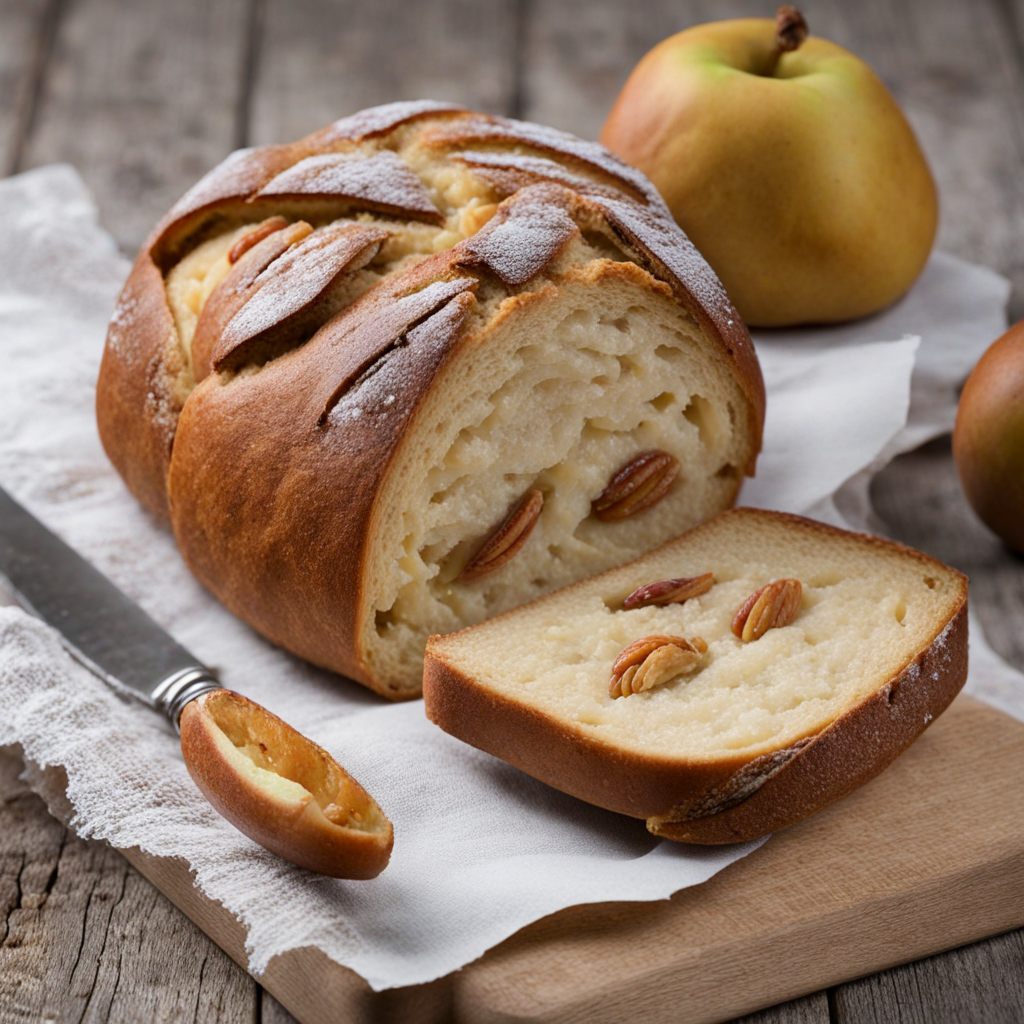Malbuner
Malbuner is a delightful culinary gem from Liechtenstein, known for its rich flavors and comforting textures. This traditional dish typically features a hearty blend of meats, particularly pork and beef, which are slow-cooked to perfection. The meat is often marinated in a variety of herbs and spices, providing a unique depth of flavor that tantalizes the taste buds. The incorporation of local ingredients, including fresh vegetables and aromatic herbs, enhances the dish, making it a wholesome and satisfying meal. Each bite reveals a harmony of savory notes, complemented by the subtle sweetness of the vegetables used in the preparation. One of the standout elements of Malbuner is its accompanying side dishes, which often include creamy polenta or fluffy dumplings. These sides serve to absorb the rich juices from the meat, creating a delightful balance that elevates the overall dining experience. Additionally, a drizzle of homemade gravy or sauce adds an extra layer of complexity, with hints of garlic and onion that linger on the palate. The dish is often garnished with fresh herbs, giving it a vibrant appearance and enhancing its aromatic profile. Malbuner is not just a meal; it's a celebration of community and tradition in Liechtenstein. Often enjoyed during festive occasions or family gatherings, it brings people together over hearty servings and warm conversations. The experience of savoring Malbuner is enhanced by its rustic presentation, typically served in generous portions that encourage sharing and bonding. For those seeking to explore new tastes, Malbuner promises a memorable culinary adventure that captures the essence of Liechtenstein's rich heritage.
How It Became This Dish
The History of Malbuner: A Taste of Liechtenstein Malbuner, a traditional cheese from the tiny yet picturesque principality of Liechtenstein, offers a fascinating glimpse into the culinary heritage of this Alpine nation. Nestled between Switzerland and Austria, Liechtenstein is known for its stunning landscapes, rich history, and, perhaps less famously, its unique contributions to the world of cheese. Malbuner, with its distinctive flavor and artisanal craftsmanship, serves as a beacon of this rich heritage, combining regional resources with centuries-old traditions. #### Origins of Malbuner The origins of Malbuner can be traced back to the agrarian lifestyle of the people in Liechtenstein, which has been sustained for centuries. The principality, with its lush pastures and mountainous terrain, is ideal for dairy farming. Early inhabitants, primarily farmers and shepherds, relied on the rich milk from their cows, goats, and sheep to create sustenance for their families. The practice of cheese-making became an essential part of their daily lives, not only providing nourishment but also serving as a means of preservation. The specific cheese known as Malbuner has its roots in the alpine cheese-making traditions shared with neighboring regions, particularly in Switzerland and Austria. The name "Malbuner" is derived from the Malbun Valley, a renowned area in Liechtenstein famous for its dairy production. This cheese showcases the local flora, as the cows graze on a diverse range of herbs and grasses found in the alpine meadows, imparting a unique flavor profile to the milk and consequently to the cheese. #### Cultural Significance Malbuner is more than just a culinary delight; it embodies the cultural identity of Liechtenstein. In this small nation, food is a reflection of its history, landscape, and the communal values of its people. Cheese-making, particularly the production of Malbuner, is often a family affair, passed down through generations. The craftsmanship involved in making Malbuner is a source of pride for many local artisans, showcasing their deep-rooted connection to the land and its resources. In Liechtenstein, cheese holds a place of honor at local celebrations and festivals. In the autumn, the "Alpabzug" festival marks the return of the cattle from the high pastures, a time when communities come together to celebrate the harvest and the dairy products that sustain them. Malbuner is often featured prominently during these gatherings, served alongside local bread, cured meats, and wines, creating a sense of camaraderie and cultural belonging. Moreover, cheese-making in Liechtenstein, particularly with products like Malbuner, has been recognized for its role in promoting sustainable agriculture. Local producers emphasize traditional practices that respect the land, use natural ingredients, and encourage biodiversity. This commitment to sustainability resonates with consumers who are increasingly aware of the environmental impact of their food choices, further enhancing the cultural significance of Malbuner in modern culinary practices. #### Development Over Time The evolution of Malbuner reflects broader trends in European cheese-making, with influences from neighboring countries shaping its production methods and flavor profiles. In the early days, Malbuner was primarily produced for local consumption. However, as transportation and trade routes improved in the 19th and 20th centuries, this cheese began to gain popularity beyond the borders of Liechtenstein. During the late 20th century, the rise of artisanal and specialty cheeses led to a renewed interest in traditional products like Malbuner. As consumers began to seek out authentic flavors and local products, cheesemakers in Liechtenstein embraced this trend, focusing on quality over quantity. The result was a resurgence of artisanal cheese-making practices, with Malbuner standing out for its distinctive taste and craftsmanship. Today, Malbuner is produced in small batches, emphasizing the use of high-quality, locally sourced ingredients. The cheese is made from unpasteurized cow’s milk, which is carefully curdled and aged to develop its characteristic flavor. The aging process, typically lasting several months, allows the cheese to develop a rich, nutty taste with a slightly tangy finish. The production of Malbuner has also adapted to modern tastes and dietary preferences. While traditional recipes remain at the core, cheesemakers have experimented with different aging techniques and flavor infusions, incorporating local herbs and spices to create variations that appeal to contemporary palates. This flexibility ensures that Malbuner remains relevant in a rapidly changing culinary landscape while maintaining its authenticity. #### Malbuner in the Modern Culinary Scene In recent years, Malbuner has gained recognition beyond the borders of Liechtenstein, appearing on international cheese boards and in gourmet shops across Europe. Its unique flavor has been celebrated by chefs who appreciate the high-quality ingredients and artisanal methods that define this cheese. As a result, Malbuner has found its way into a variety of dishes, from sophisticated appetizers to hearty alpine meals. The growing popularity of Malbuner has also led to the establishment of cheese festivals and workshops aimed at educating consumers about its rich heritage. These events often feature tastings, pairings with local wines, and demonstrations of traditional cheese-making techniques, allowing visitors to deepen their appreciation for this remarkable cheese. Furthermore, the resurgence of interest in local and sustainable food sources has positioned Malbuner as a symbol of the principality's commitment to preserving its culinary traditions while embracing modern innovations. This balance between tradition and modernity is a hallmark of Liechtenstein’s food culture, making Malbuner not just a cheese but a representation of the country’s identity. #### Conclusion Malbuner is more than a delightful cheese—it is a testament to the rich history and culture of Liechtenstein. Its origins in the Alpine pastures, cultural significance in community celebrations, and evolution through time reflect the resilience and adaptability of this small nation. As modern palates continue to seek authentic flavors and sustainable practices, Malbuner stands as a proud ambassador of Liechtenstein's culinary heritage, inviting the world to savor a piece of its history. Whether enjoyed on its own, paired with local accompaniments, or featured in contemporary dishes, Malbuner remains a beloved symbol of the principality’s enduring relationship with its land and traditions.
You may like
Discover local flavors from Liechtenstein





